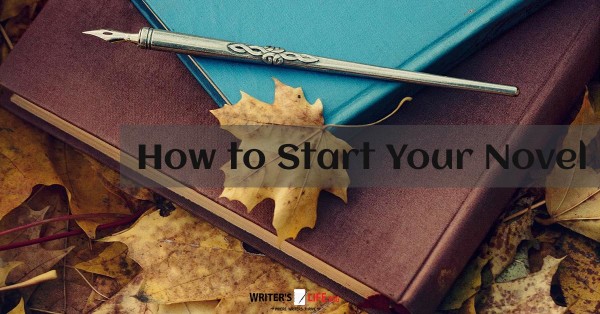- How To Tackle Jealousy In Creative Writing
- Common Submission Mistakes
- How To Stop Your Blog Becoming Boring
- The One Thing Every Successful Writer Has In Common
- How To Make Yourself Aware Of Publishing Scams
- Why Almost ALL Writers Make These Grammar Mistakes At Some Point
- 5 Tips For Authors On How To Deal With Rejection
- Top Mistakes to Avoid When Writing a Novel
- How to Avoid Common New Writer Mistakes
- 10 Mistakes New Fiction Writers Make
The Beginners Checklist to Writing A Novel

You think the opening to every novel is different? That perhaps there is no right or wrong way to start? We have all heard the phrase ‘begin at the beginning’ but what exactly does that mean?
In fact there are strategies you can employ when starting your novel that will give it a greater chance of success. Remember while most people might not judge a book by its cover, if you haven’t grabbed a persons attention before the first chapter is through, you don’t stand much of a chance of them continuing. The opening of your book needs to be powerful and exciting, it needs to reveal enough of the characters and their stories to engage the reader and make them want to find out more.There are in fact only four good ways you can start your novel, and almost every successful book will fit into one of them. Pick one of these approaches and you are far more likely to keep your readers interested.
The Prologue
Opening your book with a prologue is a clever way of engaging the reader from the outset. You take the reader to a time far earlier than the present story, and describe a scene that reveals some of the background, or alternatively a stand alone scene that intrigues the reader and will have significance later in the book. A prologue helps establish why things are the way they are, it hints at action later to come, it can be used to create suspense, intrigue, and delight. A prologue sets the tone for your novel, without necessarily having to bring any of your main characters into it.
The Action opening
Another classic way to start your novel is to open with a scene where your protagonist is in the middle of some action - action which is relative to the main story. The action doesn’t have to be the helicopter exploding in the sky sort, but needs to be something which relates to the core of the story, be it your heroes daily routine, a fight which catalyses the breakdown of a relationship, a car crash -anything where you see your character doing something interesting, something which reveals a little about them, that will spark the readers interest and keep them reading on.
Starting in the middle (In medias res)
A rather more unusual approach is to start your novel in the middle of the story. If a lot has already happened, and you want to introduce your protagonist having been already deeply effected by these events, then this might be the best way to do it. Much of your story is then told in reverse, explaining how things came to be. This opening can be very effective if you write it well, as readers will immediately want to know the ‘how’ and ‘why’ of it all and therefore will continue to read your book in order to find out.
The Frame Device
Another common way to begin your first chapter is to tell a story within your story. An example of a frame device would be a character in your story settling down to read a book, which then becomes the main story. This is a clever way of coaxing the reader in, as writing about someone being interested and intrigued by your story makes the actual reader trust that it must be worth reading too. This device is also used to make huge jumps in the story as you can have a narrator summarise a long passage of time in just a single sentence, for example, ‘it continued this way for years.’
Taking time to consider how to approach the first chapter of your book is so important. Find the one that works best for you, and think strategically, and you will have a better chance of drawing your reader in as well as bringing out the best in your story too.





























